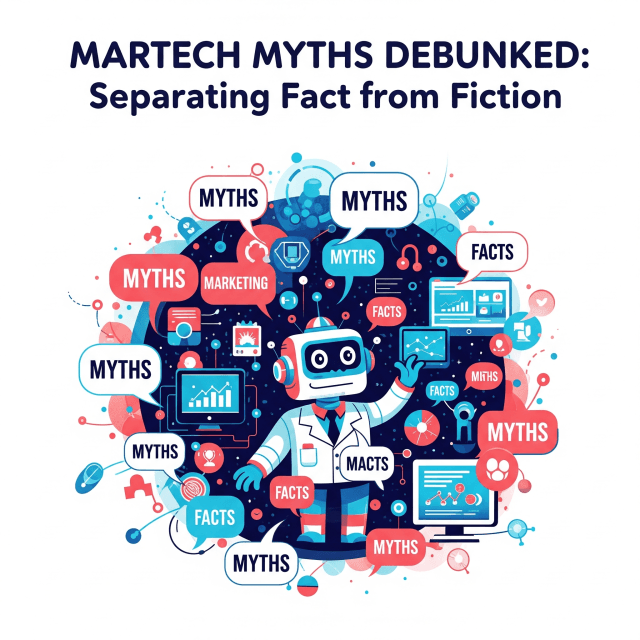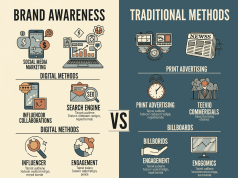In the rapidly evolving landscape of marketing technology (Martech), businesses often encounter a myriad of myths and misconceptions that can cloud their decision-making processes. Understanding what constitutes fact and fiction in Martech is crucial for organizations looking to maximize their return on investment in this technology-driven era. Here, we debunk some of the most prevalent myths surrounding Martech.
Myth 1: Martech is Only for Big Companies
Fact: Martech is Accessible to Businesses of All Sizes
While it’s true that larger companies may have more resources to invest in advanced Martech solutions, many tools are designed specifically for small to medium-sized enterprises (SMEs). In fact, several affordable and scalable options provide SMEs with the capabilities they need, such as customer relationship management (CRM) systems, email marketing platforms, and analytics tools. These solutions empower businesses of any size to leverage data-driven strategies that enhance their marketing efforts.
Myth 2: Martech is Only About Automation
Fact: Martech Encompasses a Wide Range of Functions
While automation is a significant aspect of Martech, it is far from the only focus. Martech encompasses a variety of functions, including data analytics, customer experience management, content marketing, and social media engagement. Automation certainly streamlines processes and increases efficiency, but a comprehensive Martech strategy should include analytics and personalization to create a holistic approach to marketing.
Myth 3: Implementing Martech Guarantees Success
Fact: Successful Implementation Requires Strategy and Adaptation
Many businesses fall into the trap of believing that simply adopting new Martech tools will lead to instant success. However, the effectiveness of these tools largely hinges on a well-defined marketing strategy, proper training, and ongoing adaptation to market changes. Organizations must continuously assess the performance of their tools and strategies, making iterative adjustments to optimize outcomes.
Myth 4: More Data Equals Better Results
Fact: Quality Over Quantity is Key
In the age of big data, marketers often assume that having access to vast amounts of data will automatically yield better insights. However, the reality is that the quality of data is more important than sheer volume. Good data analysis relies on accurate, relevant, and timely information. Organizations should focus on gathering actionable data and employing analytics tools that provide meaningful insights rather than drowning in an ocean of irrelevant metrics.
Myth 5: All Martech Solutions are Created Equal
Fact: The Right Tools Depend on Specific Business Needs
Not all Martech solutions fit every business. The effectiveness of a particular tool varies based on the unique needs, objectives, and capabilities of an organization. What works for one company might be ineffective for another. Businesses should conduct thorough research and select tools that align with their specific goals and marketing strategies rather than adopting trendy solutions blindly.
Myth 6: Martech Replaces Human Creativity
Fact: Martech Enhances, but Doesn’t Replace, Human Creativity
There’s a common misconception that Martech will eventually replace human creativity in marketing. In reality, Martech is designed to augment human capabilities, enabling marketing teams to focus on strategic thinking, creative content development, and relationship-building. While automation can handle repetitive tasks, the human touch remains essential in crafting compelling narratives and unique brand experiences.
Myth 7: Once You Invest in Martech, You’re Set for Life
Fact: Martech Requires Continuous Evaluation and Upgrades
Investing in Martech is not a one-time event. The technology landscape evolves rapidly, and ongoing evaluation of your tools is essential to stay competitive. Businesses must be willing to adapt, upgrade, or swap out tools based on performance metrics and emerging trends. This continuous evaluation ensures that organizations are utilizing the most effective solutions to meet their marketing goals.
Conclusion
In navigating the complex world of Martech, it’s essential to separate fact from fiction. By debunking these myths, organizations can make more informed decisions, integrate appropriate tools, and develop strategies that drive meaningful engagement and lasting success. Martech is a powerful ally, but its effectiveness hinges on how well it’s integrated into a broader marketing strategy and how adeptly teams leverage its capabilities. As the landscape continues to evolve, staying informed and adaptable will be the key to harnessing the full potential of marketing technology.









